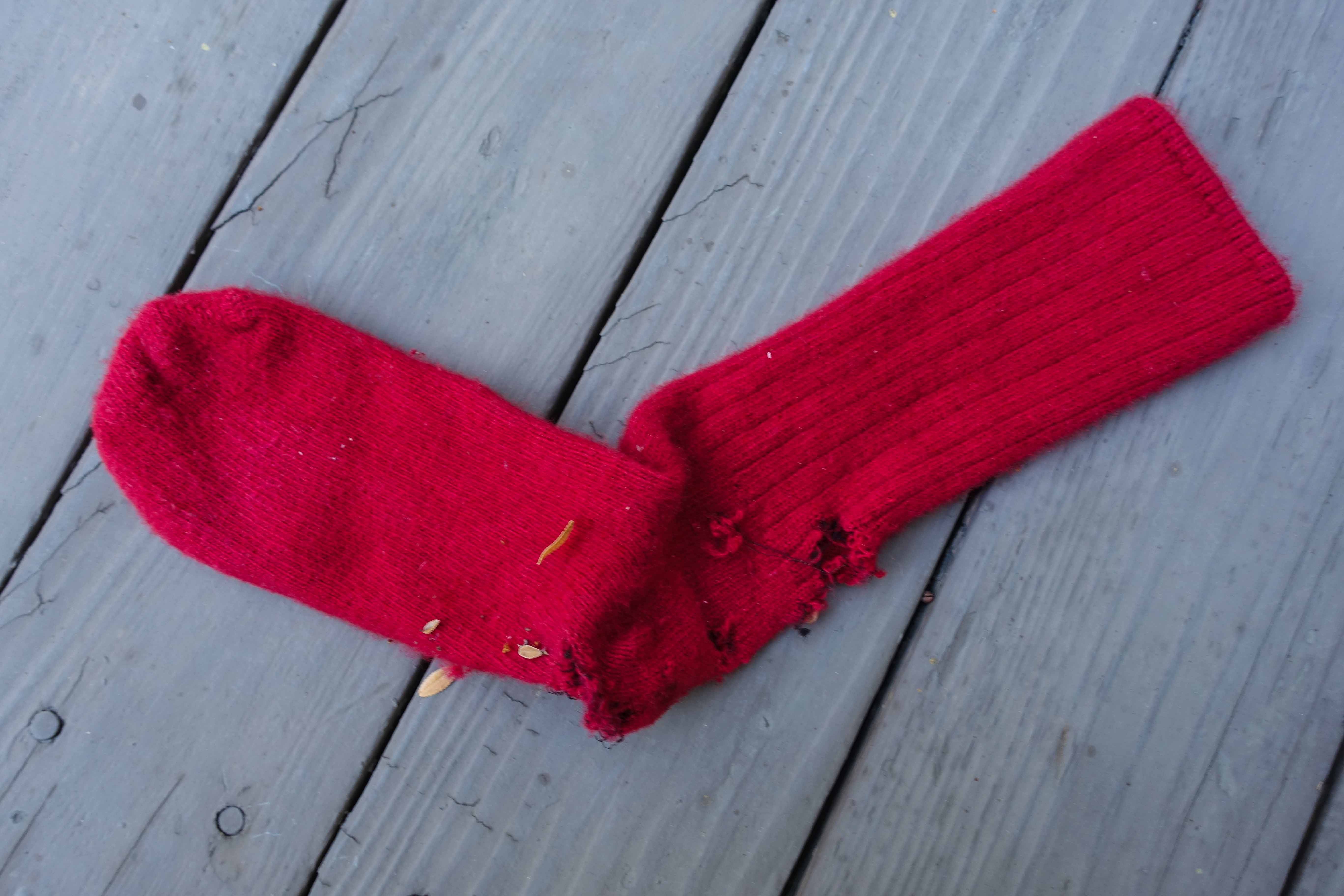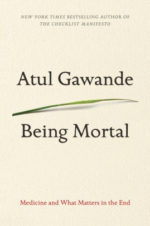Meditation on a Hand
Posted on | November 28, 2017 | Comments Off on Meditation on a Hand
A few weeks ago in France I looked at a 30,000 year-old outline of a human hand, not unlike the ones that children in school draw today. This hand had been carefully placed on the side of a cave we call Pech Merle in the Lot Valley. Then someone blew red ocher through a hollow bone to airbrush one of the earliest deceptions of a human.
 Something caused these early humans to wander deep in caves, paint pictures of animals, and then pause to give recognition to themselves. Was it worship as some have suggested? Our guide Magen O’Farrell cautioned us that it is impossible for contemporary humans to know the minds of the people we call Cro-Magnons.
Something caused these early humans to wander deep in caves, paint pictures of animals, and then pause to give recognition to themselves. Was it worship as some have suggested? Our guide Magen O’Farrell cautioned us that it is impossible for contemporary humans to know the minds of the people we call Cro-Magnons.
Still, hands carry part of our story. Recently, I took a picture of my hand and wondered at the age spots, the bumps from arthritis, the places where bones had been broken or bent, and the little spots that might turn to cancer.
And because we carry an urge to communicate our story to others, sometimes excessively (see Facebook), we can look back perhaps 1,200 generations before a Christ and feel kinship with someone else who pictured her hand. Because the language of the artists is unknown to us, all we can do is wonder and be captured by a sense of awe and connectedness.
Unanswered questions linger. The world was cold then, how did you keep warm? Were you happy? Did you have kids? Am I one of them?
Retirement 075, a Remedial Course
Posted on | September 13, 2017 | Comments Off on Retirement 075, a Remedial Course
Retirement 075
This is a remedial course for students who have previously experienced a lack of success with retirement. It is to be expected that an intensive review of the basics will be necessary as well as modeling and intervention by those who have been successful in separating themselves from employment. This is a year-long course, and it can be repeated if necessary.
The course meets on Fridays at 4 in whatever watering hole I choose.
It covers such important topics as: shedding prior commitments, listening to your muse, and the proper construction of a bucket list.
The full syllabus.Retirement 075
Tracking Tracy Lum in Outrigger Canoe Race 2,500 Miles Away
Posted on | September 2, 2017 | Comments Off on Tracking Tracy Lum in Outrigger Canoe Race 2,500 Miles Away
We’re home bound in Claremont, hunkered down in the 105 degree heat today tracking our daughter-in-law Tracy Lum as she and her crew from the Newport Outrigger Canoe Club race in the Queen Lili’uokalani race between Kailua and Honaunau off the Kona coast of Hawaii’s Big Island. It continues over four days and is billed as the world’s largest long distance canoe race.
 I’m wowed by Tracy’s stamina, and that of the other racers. I don’t know what the ocean conditions are today, but on any morning paddling 18 miles at sea is no small deal. And I’m also a bit impressed with the technology that allows us to sit in air-conditioning and track their progress. Each of the boats has a geo-positioning device that works in a system developed by a French company, DotVision Motion. I can track Tracy’s boat—moving up, falling back, moving up…pass out those power drinks—and text our son, Charles, as he rides toward the finish line to meet his wife. (Screenshot below, along with race beginning and ending photos courtesy of CAK.)
I’m wowed by Tracy’s stamina, and that of the other racers. I don’t know what the ocean conditions are today, but on any morning paddling 18 miles at sea is no small deal. And I’m also a bit impressed with the technology that allows us to sit in air-conditioning and track their progress. Each of the boats has a geo-positioning device that works in a system developed by a French company, DotVision Motion. I can track Tracy’s boat—moving up, falling back, moving up…pass out those power drinks—and text our son, Charles, as he rides toward the finish line to meet his wife. (Screenshot below, along with race beginning and ending photos courtesy of CAK.)
 Meanwhile, Charles is phoning in pictures.
Meanwhile, Charles is phoning in pictures.
Technology is a mixed blessing. But today air conditioning and GPS technology plus the Internet are allowing us to experience a boat race 2,500 miles away.
Five Days in La La Land: Hiding in plain sight in Hollywood
Posted on | August 14, 2017 | Comments Off on Five Days in La La Land: Hiding in plain sight in Hollywood
Leanne and I have explored Paris on the #69 bus that goes to the Pere Lachaise cemetery and Florence, where the #7 bus goes up the hills for a view of the city. We visited Berlin when we were young, before the Wall went up, and when we were old after it came down. We got to know London and Melbourne well, came to love Venice. But in 40 years of living in Southern California, we’ve never spent a week in L.A.
We corrected that oversight, spending a delightful week in a cottage, formerly a stables behind a 1906 house in Hollywood. Los Angeles has the reputation for being a hard city to visit, with its sprawl and vast distances. Around the intersection of Hollywood Blvd. and Highland Ave., a tourist magnet draws the curious to the sidewalk embedded stars, a couple historic theaters, and frequent media events. But, hiding in plain site are streets where people live and where interacting with them brings the same spontaneous delights as talking to an old schoolteacher in Italy or a Black Cab driver in London.
Our Airbnb, was billed as Idyllic Hollywood Cottage Oasis, and it was as good as its ad. We settled into the cottage, which architect and owner Jeff Smalley had redesigned. The old barn door slides to close off the bathroom. That evening, we walked a few blocks to The Pikey on Sunset Blvd., a Brit influenced pub and restaurant with good beer and an interesting menu, including vinegar chicken and a side of thrice cooked fries. A bit like landlubber’s fish and chips.
Part of our plan was to visit bits of L.A. architecture not seen. So, Tuesday, we headed to the Frank Lloyd Wright designed Hollyhock House in Barnsdall Park, just off Hollywood Blvd. But, as the friendly security guard told us, the house isn’t open on Tuesday. Still, it was a nice encounter, and when we returned on Friday we were told that the interior tour was entirely self-guided. Not so, we found. Three feet inside the door, we were greeted by a docent who said, “the first thing you’ll find out about us is that we love to talk.” Twenty minutes of stories followed, about the hollyhock theme—they were Aline Barnsdall’s favorite—built into the structure and the decorations, about Wright’s indoor-outdoor vision, including a stream that flowed through the living room, and in true Wright fashion, leaked. Read more
Retirement, Week 2: Driven to write about Boyle Heights protests
Posted on | July 25, 2017 | Comments Off on Retirement, Week 2: Driven to write about Boyle Heights protests
This isn’t going so well. I am having news withdrawal symptoms. I look at some of the Twitter feed and the email subscriptions I get every day and think them boring. But my fingers want to be on a keyboard, and there are ideas out there that need exploring.
I’ve been fascinated by the Boyle Heights gentrification protests, particularly the specter of people in masks, more fashionista than Zapatista I think, protesting a coffee bar where one of the owners is white.
L.A. Times columnist Steve Lopez visited as the employees were sweeping up broken glass from vandalism. Silly, he said. The owners report that the protests are attracting business.
Boyle Heights, a neighborhood just east of downtown Los Angeles, has always been a neighborhood in transition. It was the site of one of the first Jewish settlements in Los Angeles, and the Breed Street Shul built in 1923 still stands, although the Jewish vanguard decamped to Fairfax Avenue and points west many decades ago.
Remnants of a Japanese community are still visible: some very old settlers, a large temple, and a cemetery.
These days, diversity largely means mixing waves of Latino immigrants.
Press accounts call this “vibrant,” and I suppose it is. Unlike many older suburban areas, there were not many vacant storefronts on Cesar Chavaz (formerly Brooklyn Avenue) even when I worked in Boyle Heights 15 years ago. There were people on the streets, and walking from the Breed Street School down to 3rd Street took you past front yards where chickens were pecking at the earth oblivious of their in-the-pot fate.
But there was also a lot of violence. After an evening meeting, it was possible to hear the pop-pop-pop of gunfire as one walked to the car. A reforming gang member was killed in a revenge shooting at the Smart & Final across from the school, one of the scores of Father Boyle’s Homeboys he has buried.
TV journalist John Merrow came to town to do a story on what he termed a gang-prevention program called the Society of Students. (SOS was really much more a build resilience program, and I’m sorry that it hasn’t spread.) Merrow remarked that the neighborhood looked kinda nice, not like the slums in older eastern cities, and he wondered what the big deal was about violence. I told him to ask the kids to demonstrate the pancake drill.
Elementary students at Breed were taught, “when you hear gunfire, make yourself a pancake on the ground.” The students demonstrated. Merrow was amazed.
The point of this is: let’s not romanticize Boyle Heights or other places that are in the process of gentrification.
It’s not like anyone with a half a foresight couldn’t see it coming. Stand on a patch of land with a clear view to the west, and rapidly revitalizing downtown is clearly visible. You could work there and walk home.
There had been a housing boomlet before the crash of ’08. Now it’s back, with the help of the new light rail Gold Line that connects Boyle Heights and the rest of East L.A. to the city center. Boyle Heights is simply too close to downtown to remain a real estate backwater much longer.
The question is: Can a rising neighborhood lift the people who are already there, and if so how does it do that?
This substantive problem comes to rest in schools, classrooms, and what school choice becomes for urban schools. When we were writing about the Annenberg project in Boyle Heights, we started noticing housing transitions and posed the question, “what would Roosevelt High School do with 500 professional middle class kids if they showed up at the school house door.”
People looked at us in disbelief. “Wouldn’t happen,” they said. “No one wants to go to school with poor kids.” But that’s exactly the problem will face Los Angeles schools. If young middle class families move back into the city, where will they school their children? If LAUSD builds itself around only being the educator of last resort for poor kids—the “chooser” kids having left for the charters—then it creates class segregation for itself and its students.
On the First Week of retirement…
Posted on | July 14, 2017 | Comments Off on On the First Week of retirement…
On the first week of retirement my true love gave to me…. A list of all the things I hadn’t done around the house while using writing the EdWeek column as an excuse. Since I’ve been a workaholic for a long time, the list is long.
Neighbor Arthur’s elm was brushing against the tile roof and needed trimming before the next storm. The patio needed power washing, something that was forbidden during the drought. And one thing led to another. After the patio was washed down, the deck looked a little grubby, then the house, then the flat roof. Why not spray down the car?
Good job, Chuck, she says while reminding me that I’ve only put a dent in the list.
My end of the week reward was a drive up the coast to Cambria, and a glorious two days of walking on the beach and driving up California 1. The highway is closed in two different places. A collapsed bridge stops southbound traffic. And a massive landslide about 18 miles north of Cambria halts northbound traffic. Hearst Castle is still open.
Leanne and I had a delightful drive to the end of the road. Since the road doesn’t go through, there was virtually no traffic. No 50-foot RVs driven by flatlanders meeting you around the hairpin turns that are posted at 10 MPH. Plenty of spaces at the turnouts for long looks at a cobalt blue ocean.
Even the Elephant Seals seemed to be a good mood. The big males were play fighting in the surf. The females and the young had abandoned them for their long journey in deep water, so the guys were just hanging at the beach waiting for their fur to molt before heading to Alaska. Theirs is the ultimate male spa.
Where in the world is @CTKerchner
Posted on | July 12, 2017 | Comments Off on Where in the world is @CTKerchner
Soon, maybe already, ‘On California’ will no longer be listed among the active blogs at EdWeek.org. It should be available in the archive at the bottom of their blog listing.
I will be jotting things here at mindworkers.com and probably, because I can’t help myself, at other locations.
Using the ‘R’ Word
Posted on | July 4, 2017 | Comments Off on Using the ‘R’ Word
Last week I put ‘On California,’ my column at EdWeek.org on hiatus, maybe permanently. Retirement has always been a funny concept to me. I’ve failed at earlier attempts, but it’s time for an earnest try.
Here’s what I wrote:
I was 16 when I walked into the Barrington (Illinois) Courier-Review with the object of being its sports photographer and walked out a salaried sports reporter and editor. Salaried at $10/week, a credit card at the Standard Oil station down the street, and reimbursement for photo supplies.
I learned basic Associated Press style, who-what-when-where-why-how-leads, and the capacity to write on deadline. Shortly, I was contributing 40 column-inches and a couple pictures to each week’s paper. It was about as much fun as a teenager could have, and it turned my head toward journalism as a career. At the University of Illinois I majored in Daily Illini, missing so many classes that I had a reoccurring dream that I was in a final exam for a course that I had never attended. This common dream was so plausible in my case that I kept a copy of my class schedule thumb tacked to the bookcase next to my bed so that when I woke in a sweat I could verify my registration. My grades were mediocre enough in the classes I did attend. For more on the Daily Illini, see Roger Ebert and Me.
I found love at Illinois, too, and shortly after graduation married Leanne Bauman, who remains my partner in everything. We stayed on for a masters. I graduated with the first class of MBA students that the university produced, and I believe that I hold the distinction of being one of the lowest paid MBA graduates in the country. This maybe excludes nuns and inmates.
With thoughts of being a great newspaper executive, I took a job at the St. Petersburg Times, working for the legendary Nelson Poynter on one of the South’s few liberal papers, one of five that supported the 1964 Civil Rights Act that changed society before our eyes. I was inept at management but loved journalism until I wandered away into university life. Recently, Nick Casey, the New York Times foreign correspondent who spoke at our grandson’s high school graduation, asked me why I left newspapering, I thought for a second and replied, “Because I figured out that I wasn’t going to be you.”
Academic life, almost all of it at Claremont Graduate University, served me well, and I think that I reciprocated with good work. They gave me some momentos after I had been on the faculty for 35 years, and I concluded that three and a half decades of teaching was both wonderful and sufficient.
The prospect of bookending my career with journalism seemed appealing, and I thought that I might write a dozen or so commentary pieces over a year. Since starting ‘On California’ in 2014, the column has posted 281 pieces, most written by me and edited by Leanne.
Both author and editor need a rest and a taste of retirement*, so we’ll put ‘On California’ on hiatus. Thanks to you all.
————30————
(*Spoiler alert: I’ve flunked retirement before.)
All the Stuff that Wasn’t in the Christmas Letter
Posted on | December 22, 2015 | Comments Off on All the Stuff that Wasn’t in the Christmas Letter
In my Christmas letter, volume 54 of the Kerchner Chronicle, I promised readers an extension of the narrative here on the Mindworkers blog. That was probably a mistake.
Christmas letters are a difficult genre. They veer from cute to seriously boring, and it’s hard to say anything substantive about family issues—no, no, too much information—religion, politics, economics, anxiety, sickness, or death. Which is why there are lots of vacation pictures.
There are a few memorable variations. A friend of my parents used to draw clever cartoons and produce them on blueprint paper. One particularly foolhardy relative devotes most of his letter saying snarky things about his wife, which he doesn’t believe, or says he doesn’t. But for the most part there are straightforward narratives about the past year, and particularly about family gatherings and travels.
I thought I might say more. Forget talking about anxiety. We’re not Kerchners, not the Kardashians. Living in full public view holds little appeal. And we’re not going much into family revelations, not that there are many. I write about politics every day in ‘On California.’
So, like other folks, I’m back to exploring the year; reliving some of the best parts of it and sharing some pictures with you.
For a little fun, read the Red Sock Caper below.
Something Completely Different: The Red Sock Caper
Posted on | September 22, 2015 | Comments Off on Something Completely Different: The Red Sock Caper
 Just when your eyes were beginning to cross reading ed policy verbiage, I offer the mystery of the Red Sock.
Just when your eyes were beginning to cross reading ed policy verbiage, I offer the mystery of the Red Sock.
The red sock disappeared. Leanne had given me a very comfy pair of bright red socks that I wore when I was feeling reckless, wanting to make a fashion statement, or to put out flares that I wasn’t to be messed with.
Thus, the socks were worn with some frequency, and they looked great with jeans and loafers.
But socks get dirty, and these were wool, so were dried outside. When last seen they were draped over a chair in the back yard.
When Leanne went to collect the dry socks, she only found one. The wind must have moved it, we thought, but inspection of the patio, the flowerbeds, the fishpond proved futile. Something took the sock, and we speculated whether it was an old crow, a young possum, or maybe Mischief the across-the-street cat.
The caper of the disappearing sock, we thought.
But Saturday morning the sock reappeared, artfully draped over the back steps, gnawed and mangled, but returned, leading to the greater mystery: the caper of the reappearing sock. What kind of animal returns a sock?
Speculation is running toward a socialist possum, which took what he needed and returned the rest, or maybe a playful raccoon, which tired of soccer (socker?) and discarded the toy where it was found.






